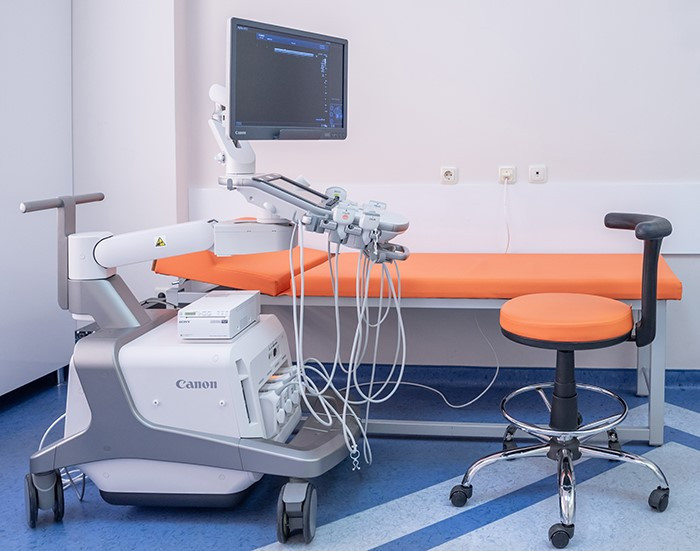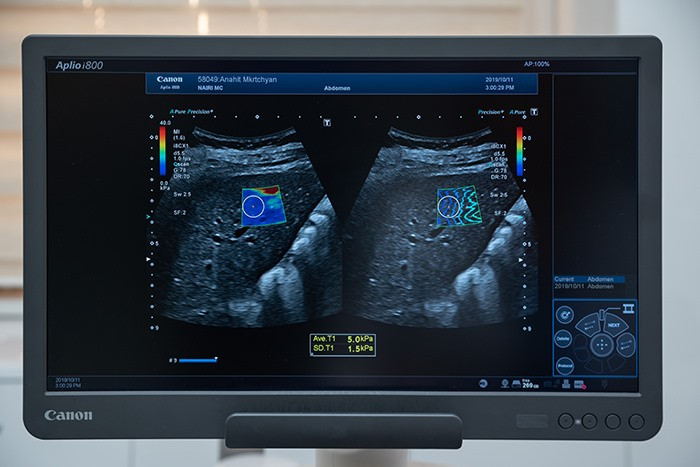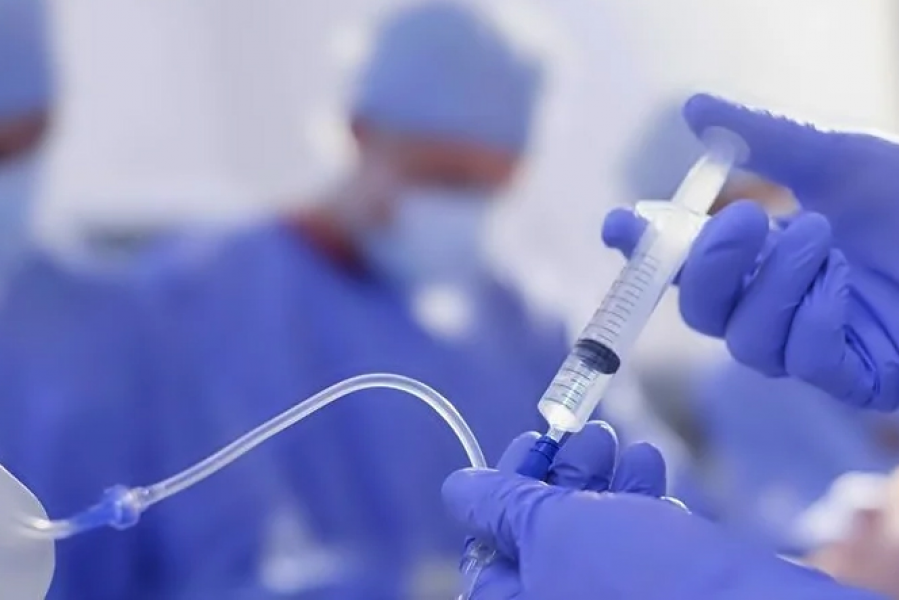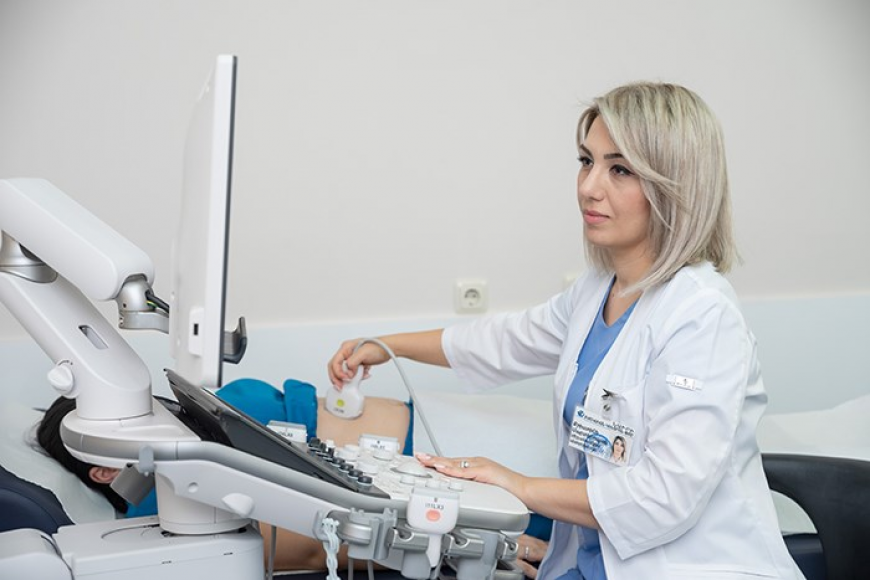News
Liver elastography. sonographer Kristine Martirosyan
05 November 2019 | News | Ultrasound Diagnostics
Elastography, ultrasound assisted, is a painless, accurate, non-invasive method of diagnosis that, unlike ultrasound examination of the liver, allows to determine the degree of liver fibrosis - fatty hepatosis (fatty liver). We differentiate F0-F4 degree of fibrosis (F4 is typical for cirrhosis),degree of liver obesity - S0-S4 degree. It should be noted that progressive hepatosis (obesity) of the liver threatens the development of cirrhosis of the liver.
Liver elastography is performed at Nairi Medical Center with a TOSHIBA Aplio i800 device.
Chronic liver disease (including viral hepatitis B and C, which is accompanied by an increase of fibrosis in liver) can lead to irreversible changes in the liver: cirrhosis and even primary liver cancer. Therefore, diagnosis and treatment should be started as soon as possible.
In the past, puncture and histological examination were performed to assess the nature of liver disease.
Puncture biopsy is a less invasive procedure, often painful, has negative manifestations, requires a rehabilitation period. Liver elastography is now an alternative diagnostic method.
The role of liver elastography is increasing in leading clinics, which in the future, as a diagnostic method, may replace liver biopsy.
The advantage of elastography
Unlike biopsy, liver elastography can be used to examine the entire organ, which ensures high reliability of the results. Based on the received data, the doctor enables a more accurate diagnosis and effective treatment.
-How to prepare for an elastographic examination of the liver?
It is advisable to come for the examination hungry or 4 hours after eating. The intervention lasts 5-15 minutes and has no contraindications.
-In what cases should a liver elastography be performed-?
It is recommended for people over 40 as a preventive examination.
Mandatory indication for liver elastography - in the following cases
- Hepatitis B, C, D
- Alcoholic steatohepatosis of the liver
- Fatty hepatosis - non-alcoholic hepatosis
- Autoimmune diseases of the liver (autoimmune hepatitis, primary biliary cirrhosis, etc.)
- Gilbert's syndrome
- Patients undergoing chemotherapy
- Liver transplantation
High risk group are considered
- diabetes mellitus
- High levels of cholesterol, triglycerides
- Above ALT, AST, GGT level
- deficiency of leukocytes and platelets
- extra weight
- Frequent increase in bilirubin
- suspected cirrhosis of the liver
The degree of liver fibrosis should be assessed before starting treatment, during treatment, and at the end.
In high-grade fibrosis (F3-F4), a decrease in fibrosis rates is observed after a long time, therefore, ongoing monitoring is required.
The questions were answered by Kristine A. Martirosyan
Sonographer at Nairi Medical Center
Similar articles
-

-

Thyroid gland and pregnancy
27 September 2021
-

-

Clinical case. Locoregional anesthesia
13 January 2022
-

Plasmapheresis. New Service at ''Nairi'' Medical Center
08 December 2021
View all
Sign up here for our newsletter





